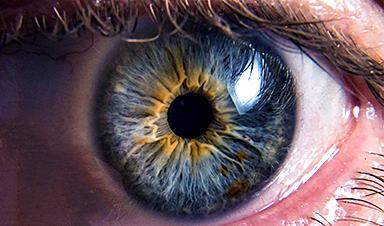A recent review has uncovered the widespread presence of food contact chemicals (FCC) in humans, identifying 3,601 chemicals used in food packaging and related products found in the human body. The study also points out considerable deficiencies in biomonitoring and the availability of toxicity data.
A recent study published in the Journal of Exposure Science and Environmental Epidemiology explores the widespread human exposure to food contact chemicals (FCCs). The research identifies which chemicals used in food packaging and other materials that come into contact with food have been detected in human samples, including urine, blood, and breast milk.
Additionally, the study underscores significant gaps in biomonitoring and toxicity data. The findings are accessible through the FCChumon database, an interactive tool created by researchers from the Food Packaging Forum in collaboration with colleagues from four academic institutions.
Research Methodology and Findings
In a systematic approach, the authors compared over 14,000 known FCCs with data from five human biomonitoring programs, three metabolome/exposome databases, and scientific literature. This revealed evidence of 3,601 FCCs present in humans, representing 25% of the known FCCs.
Dr. Birgit Geueke, first author of the study, emphasizes the importance of this work: “Our research establishes a link between food contact chemicals, exposure, and human health. It also highlights those chemicals that have been overlooked in biomonitoring studies so far. And it offers an important opportunity for prevention and protection of health.”
Video abstract summarizing key points of the study by Geueke et al. 2024 Credit: Food Packaging Forum Foundation
Certain groups of chemicals, such as bisphenols, PFAS, phthalates, metals, and volatile organic compounds, have been widely detected in human samples and food contact materials (FCMs). Many of these chemicals have hazardous properties of concern and have been linked to harming human health.
Dr. Jane Muncke, senior author, expresses concern over this widespread exposure: “This work highlights the fact that food contact materials are not fully safe, even though they may comply with regulations, because they transfer known hazardous chemicals into people. We would like this new evidence base to be used for improving the safety of food contact materials – both in terms of regulations but also in the development of safer alternatives.”
Additionally, for other chemicals that transfer from the packaging into the food, such as synthetic antioxidants and oligomers, little is known about their presence and fate in humans. Dr. Ksenia Groh from the Swiss Federal Institute of Aquatic Science and Technology comments on this knowledge gap: “Our study highlights that antioxidants, despite their high production volumes and widespread use in plastics, are largely absent from monitoring programs. The knowledge about metabolism, fate, and effects of these substances is generally scarce.”
The Urgency for Safer Materials
In addition to this, the study pointed out that many chemicals’ potential hazards have not been sufficiently investigated. While food packaging is not the only source of exposure, the data from this study will improve the understanding of how food contact materials contribute to human exposure. It is likely that the actual number of FCCs present in humans is higher than currently detected because only a subset of FCCs was investigated in detail.
Prof. Dr. Martin Scheringer, co-author from ETH Zürich, stressed the urgency of addressing this issue: “There are surprisingly many hazardous chemicals used in food contact materials, and they do not just stay there, but quite some of them reach, to some extent, the human body. This is concerning, and there clearly is a need for safer and simpler food contact materials.”
These results aim to help researchers focus on important gaps in our knowledge about human exposure to FCCs and better understand the health effects of these chemicals.
As co-author Olwenn Martin from the University College of London states, “We already knew that problematic chemicals in food packaging are not limited to well-known substances such as bisphenol and phthalates, but we were surprised by the high number of food contact chemicals for which some evidence of human exposure exists. This shows that there needs to be more research about the toxicity and exposure to many chemicals and regulations around their use in food packaging.”
Reference: “Evidence for widespread human exposure to food contact chemicals” by Birgit Geueke, Lindsey V. Parkinson, Ksenia J. Groh, Christopher D. Kassotis, Maricel V. Maffini, Olwenn V. Martin, Lisa Zimmermann, Martin Scheringer and Jane Muncke, 17 September 2024, Journal of Exposure Science & Environmental Epidemiology.
DOI: 10.1038/s41370-024-00718-2
All the data can be easily accessed and browsed in the accompanying Database on Food Contact Chemicals Monitored in Humans (FCChumon). FCChumon builds on the previously published Food Contact Chemicals Database (FCCdb) and Database on Migrating and Extractable Food Contact Chemicals (FCCmigex). This work is part of the Food Contact Chemicals & Human Health (FCCH) project.
The study was funded by the Adessium Foundation, MAVA Foundation, Sympany Stiftung, Minerva Stiftung.





















